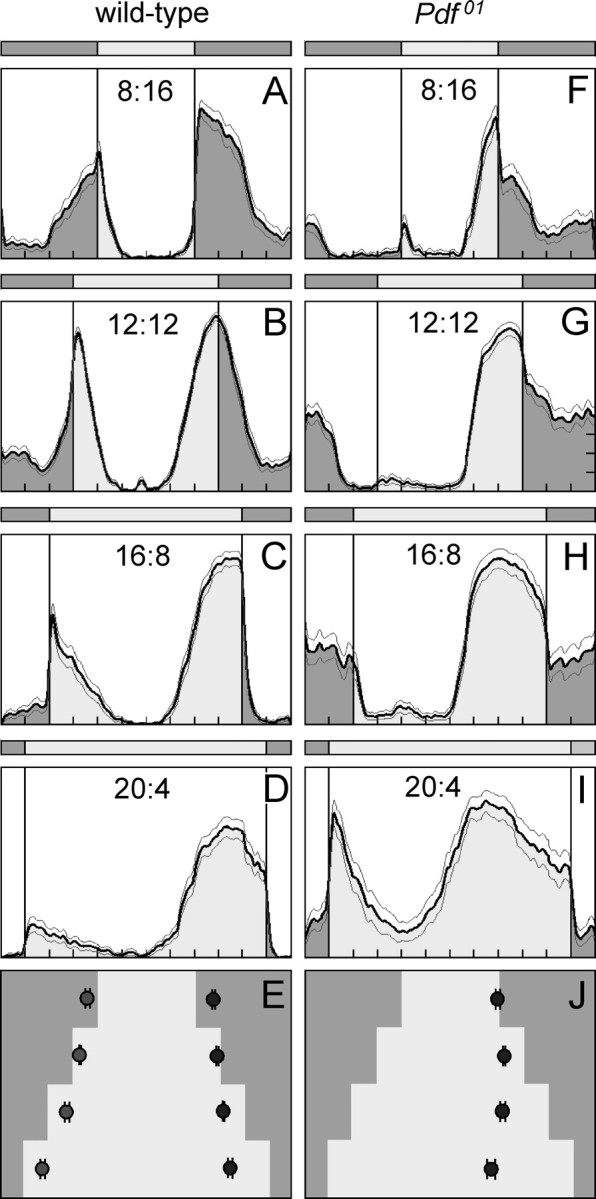Figure 8.

Average activity profiles of wild-type flies and Pdf01 mutants under different photoperiods. Photoperiods are indicated in the diagrams, whereby 8:16 means 8 h day and 16 h night; 12:12, 12 h day and 12 h night; 16:8, 16 h day and 8 h night; and 20:4, 20 h day and 4 h night. Each activity profile represents the average of 30 flies. Wild-type flies showed prominent morning and evening activity peaks under all photoperiods. The morning peaks advanced with increasing day length, whereas the evening peaks delayed. As a consequence, the midday trough became larger the longer the day length. This can nicely be seen in the phase plot of morning and evening peaks (±SEM) (E). Pdf01 mutants did not show a clear morning peak. Under LD 8:16 (F) and 20:4 (I), the flies seem to respond to lights-on with an increase of activity, and in LD 16:8 (H), a small peak was present ∼4 h after lights-on; furthermore, an activity bout was present in the middle of the night under all photoperiods except 20:4 (I). None of these peaks could be unequivocally regarded as morning peak, and therefore no average phases of the morning peak was calculated (J). The evening peak was well pronounced in Pdf01 mutants. It occurred earlier than in wild-type flies, and it did not delay with increasing day length (J). According to these results, Pdf01 mutants are unable to avoid the midday heat in long summer days.
